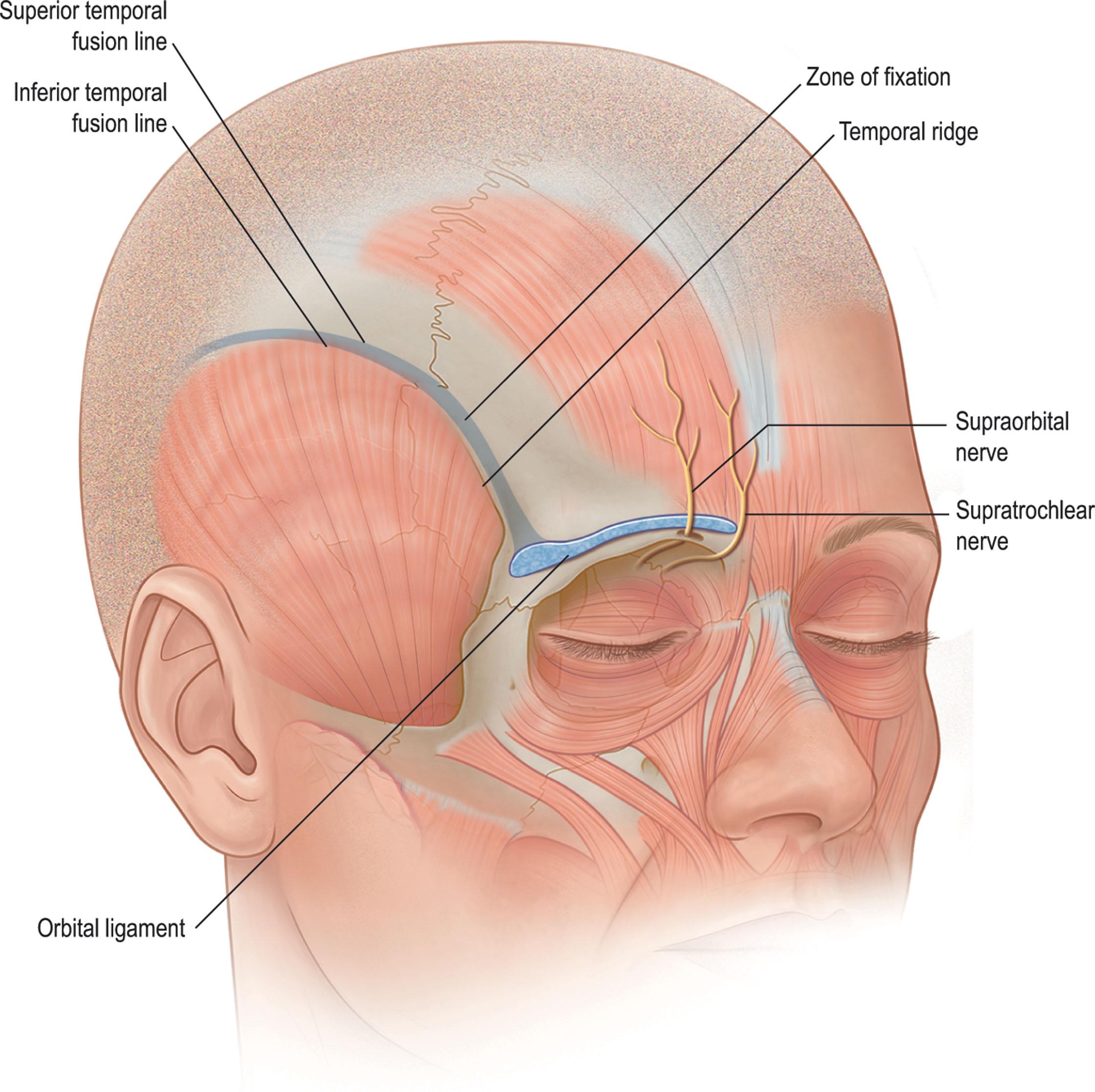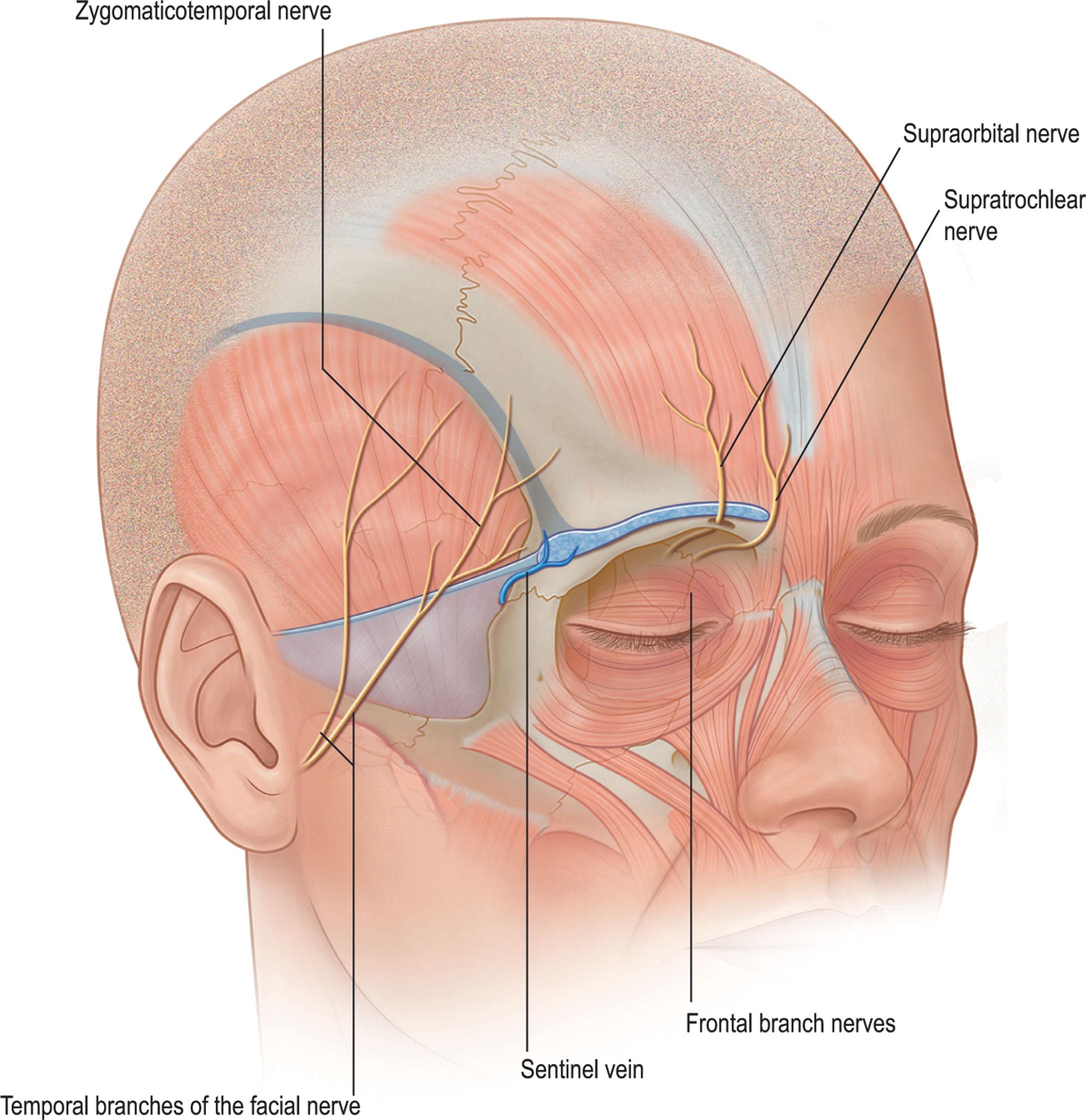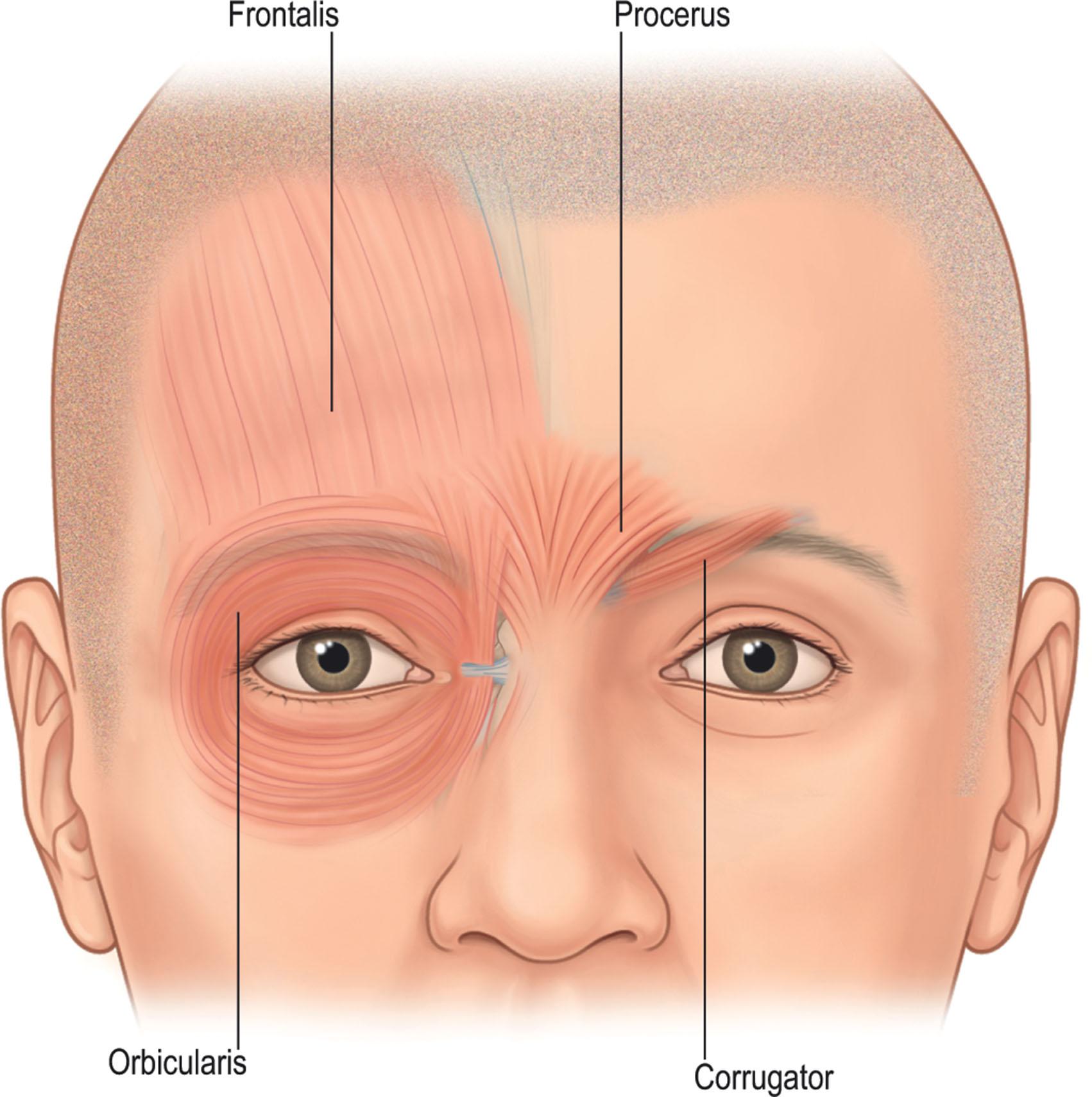Physical Address
304 North Cardinal St.
Dorchester Center, MA 02124
Advances in endoscopic brow lift technique provide a more precise and safer procedure to the aesthetic facial surgeon.
Brow shape, position, and hyperactivity of the frontalis and corrugator muscles are an integral part of periocular rejuvenation.
An upper blepharoplasty should not be indicated or performed for treatment of periocular aging until the brow position and symmetry is fully evaluated and treated.
Modern and safe facial surgeons must incorporate endoscopic techniques in their practices – a gold standard treatment for periocular rejuvenation.
Access video lecture content for this chapter online at Elsevier eBooks+ ![]()
The endoscopic approach for forehead rejuvenation and brow lift has many advantages. It provides excellent exposure for release of periorbital soft tissues combined with endoscopic magnification, shorter scars, and reduced risk of alopecia and scalp sensory changes compared with the traditional open coronal brow lift. The technique has improved over the last 15 years with better fixation devices, a better understanding of the longevity, and decreased complications of the procedure. The endoscopic brow lift offers the patient a much easier and safer solution for the aging forehead, the active wrinkles from corrugator and frontalis hyperactivity, and the ptotic, asymmetric brow ( ![]() ).
).
The anatomy of the forehead and periorbital regions should be appreciated by the surgeon. The temporal ridge is bound by the temporal line of fusion, which is a deep bony point of fixation of the overlying soft tissues. To mobilize the lateral brow and temporal region, the temporal line of fusion should be released to the level of the supraorbital rim. There are also supraorbital ligamentous attachments that require release to elevate the brow and forehead ( Fig. 12.1 ).

The nerves encountered during endoscopic brow lift include the two main sensory nerves, supratrochlear and supraorbital, and main motor branch of the facial nerve, the frontal branch. Care is taken to appreciate and preserve these nerves during dissection. Subgaleal dissection lateral to the temporal line of fusion will maintain the plane of dissection deep to the frontal branch. Inferior lateral dissection to the level of the sentinel veins while remaining on the superficial layer of the deep temporal fascia also protects the frontal branch from direct division or traction neuropraxia. The neurovascular bundles for the supratrochlear and supraorbital nerves exit the orbit 1.5 and 2.5 cm from midline, respectively; appreciation allows gentle division of the periosteum at the location to avoid injury to the nerves ( Fig. 12.2 ).

The muscles of the forehead include the frontalis, procerus, corrugator supercilii with oblique and transverse heads, the depressor supercilii, and the orbicularis muscles. The sole brow elevator is the frontalis muscle while the other muscles act as varying degrees of brow depressors. While release and physical repositioning of the brow and forehead elevate the brow, division and weakening of the brow depressors also correct dynamic ptosis and glabellar frown lines ( Fig. 12.3 ).

Become a Clinical Tree membership for Full access and enjoy Unlimited articles
If you are a member. Log in here